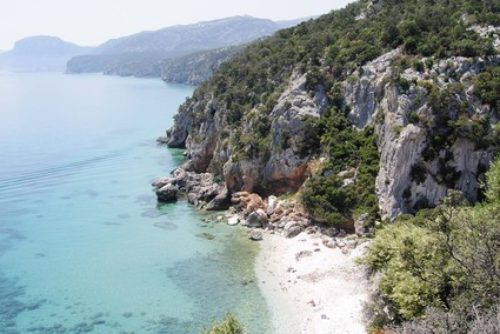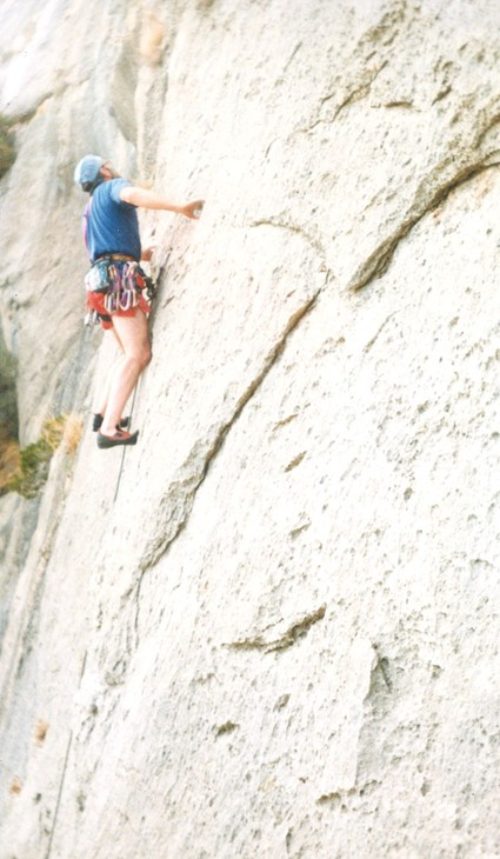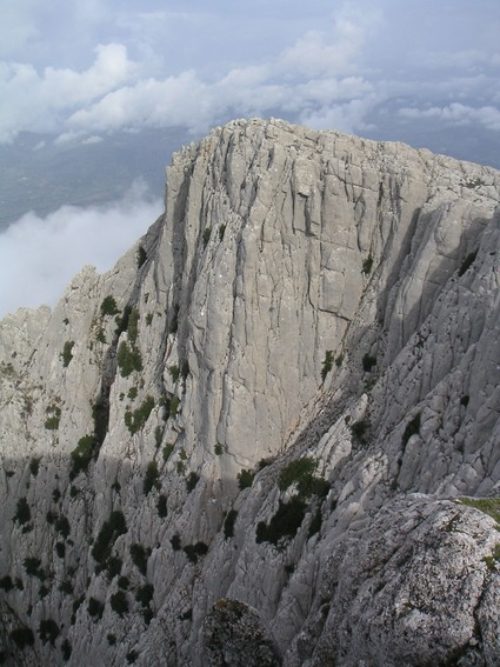Sun Rock on Sardinia by Adrian Nelhams
Sardinia or Sardenja as the locals spell and pronounce it, is the second largest island in the Mediterranean -120km off the west coast of Italy.
Surprisingly, the island is both very mountainous and a lot bigger than we had expected. Sandstone, granite and limestone cliffs litter the island, with an impressive range of traditional and sport climbing routes of all grades.
We rented a car from the airport in Cagliari and a self catering apartment in a small fishing port called Cala Gonone, which is situated half way down the east coast of the Island. This very picturesque village was a great hub for a number of different climbing locations to suit all grades and tastes.
October is a great time of year to visit, as is the end of April through into May, as the weather at these time is generally good and a little cooler than the mid- summer months.
It was inspiring to be climbing on sea cliffs that you access by boat one day and the next to be climbing on outcrops high on the side of a mountain with fantastic views over the ocean and surrounding valleys.
I spent a day climbing on the famous limestone slabs of Poltrona, which had grades to suit all abilities and routes as long as 4 pitches. The rock was the most amazing pocketed limestone, tilted at an angle that meant most of the work was on your feet. Afterwards we spent a couple of days at Fuili, a deep canyon that terminates at the sea and a small beach, which was a great place to relax and take a swim to cool down before the next route! The canyon was littered with outcrops and again routes of all grades and aspects in or out of the sun.
Dorgali the closest town to Cala Gonone, had some of the best climbing on the island - beautiful, steep orange walls of pocketed limestone, and amazing views over the town. The remote cliffs of Surtana had a completely different and more of a big -mountain feel, with climbing on long multipitch routes in a hidden valley away from everything and everyone.
In addition to the climbing, the island is full of other surprises such as vineyards, olive groves and the home to some of the oldest acheological remains dating back to as early as 1700BC. The houses and towns have a very mediterrainean feel about them, with the houses tightly packed in amongst each other, narrow streets, balconeys and white-washed walls.
All this with the addition of some delicious locally grown food and great local vino. It was all over much too quickly, but I suppose you have to leave, to be able to go back there again!




Related News Articles

ISM Virgin Peaks Expedition 2024 - Tien Shan Kyrgyzstan
ISM trip report of our trip into a very remote part of the Tien Shan Mountains, Kyrgyzstan
Read Article
Getting Into & Developing Your Climbing
Indoor bouldering is a great place to start if you want to try climbing for the first time. You can…
Read Article
ISM Virgin Peaks Expedition 2023 – Tien Shan Kyrgyzstan
ISM trip report of our trip into a very remote part of the Tien Shan Mountains, Kyrgyzstan.
Read Article
Kyrgyzstan Faces 2022
This year ISM celebrated 25yrs of expedition climbing in Kyrgyzstan, with a fantastic trip to the Fergana Range in the…
Read Article



